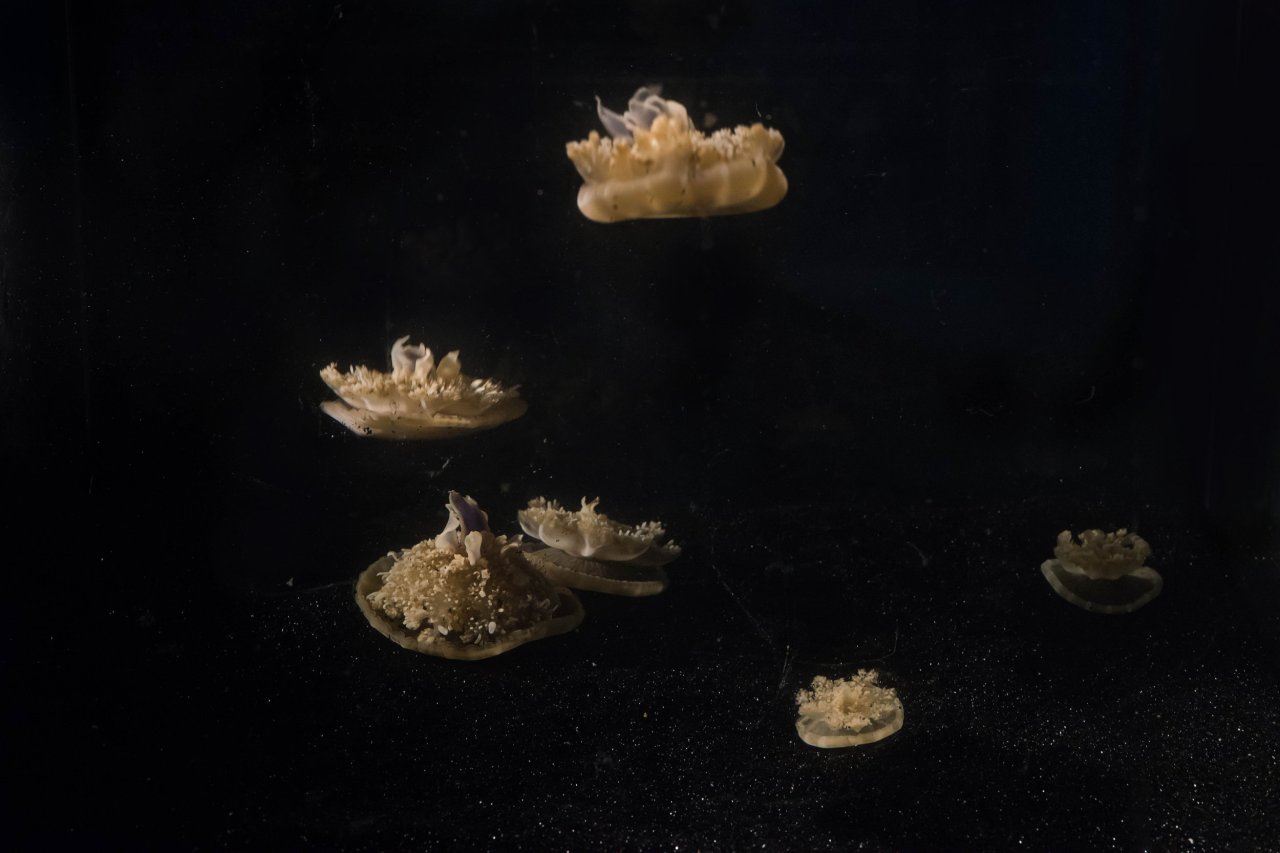Sleep is a biological process that is close to many of our hearts, but scientists haven't yet cracked all its secrets. In fact, we still don't even know why we sleep. Thus, one-third of our lives is a complete mystery.
Of course, sleep—or at least something that looks an awful lot like it—is pretty common: not just among humans and our close relatives, but also among birds, reptiles, fish, insects and even a microscopic worm found in many science labs, called C. elegans.
Still, scientists aren't yet convinced that all animals sleep. So when a trio of Caltech grad students noticed some laboratory jellyfish were acting differently when the lights were turned off, they decided to investigate.
"We just went in one night in the middle of the night with our iPhones and some pretty simple apparatuses and we filmed them," Michael Abrams, one of the three lead authors on the new Current Biology paper summarizing their findings, tells Newsweek. "You could really clearly, by eye, see a change in the behavior between the light and the dark."
The jellyfish are called Cassiopea, nicknamed "upside-down" jellyfish for their preference to hang out in shallow waters near the seafloor with their tentacles up. Cassiopea are intriguing to scientists because they have a nervous system, but a very simple one—instead of a centralized brain like ours, they have a network of nerves spread through their bodies.
Throughout the day and night, the jellyfish pulse their bells (the non-tentacle portions of jellyfish), creating currents around their bodies. "They're pretty big and it's a big movement," says Claire Bedbrook, another Caltech grad student on the team. And this is what the trio noticed that first night watching the tank—the jellyfish pulsed less at night than during the day. That observation sent the trio on a three-year quest to determine whether what they were seeing met the definition of sleep.
While you probably don't think about it each night as you put on pajamas, there is a biological definition of sleep. In fact, there are three criteria: reduced activity and being less aware of stimuli, both of which have to be able to turn off quickly (otherwise you're in a coma), and what's called homeostatic regulation (a fancy way of saying that after you go without sleep for a long time, you sleep extra to catch up).
So, Abrams, Bedbrook and fellow graduate student Ravi Nath set about designing a sequence of experiments that could methodically determine whether those boxes could be checked for Cassiopea.
In order to do so, the team needed to figure out a way of interrupting whatever sleep the jellyfish might be getting. "We had to be pretty creative," Abrams says, as they needed something they could replicate precisely without the jellyfish getting used to it and ignoring the nudge.
That meant thinking like a jellyfish, Bedbrook says. One of the runner-up techniques—putting the Cassiopea in a flask and shaking it—visibly stressed out the jellyfish, and so was discarded. "This is a real issue in sleep research," Bedbrook added. "Perturbing a sleep state without affecting an animal is actually quite difficult."
They settled on a jellyfish elevator of sorts: a tube with a netted bottom. When they wanted to nudge a Cassiopea, they used the tube to lift the jellyfish up from its hangout at the bottom of the tank. Then they lowered the tube and let the jellyfish sink back. It sounds about as annoying as someone stealing all the covers off the bed.
Once they had their perfect wake-up nudge, the trio started running the actual experiments. And yes, it turns out that keeping jellyfish awake also means keeping graduate students awake. They counted jellyfish pulses during the day and at night, after feeding and after fasting, while nudging them awake throughout the night, as well as during the day after a restless night. All told, they think Cassiopea really do sleep, even if it isn't exactly the same way humans do.
"I was a bit hesitant at the beginning of the study, I wasn't convinced that these jellyfish were sleeping," Bedbrook says. "It was the process of going through each of these different sleep criteria and each of these experiments that we convinced ourselves that what we were seeing was sleeping."
Still, she says, she's eager to see whether other researchers find similar behaviors in their own jellyfish and other brainless species. That would tell scientists something important about the value of sleep, according to Isabella Capellini, a researcher at the University of Hull in the U.K. who has studied the evolution of sleep. If species that have no brains all sleep, she wrote in an email to multiple media outlets, "the presumed benefits of sleep are more universal and far more broadly shared across the tree of life than previously thought; sleep is in essence evolutionarily older than we thought."
So, next time insomnia comes to visit, consider counting jellyfish for inspiration.


















